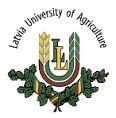Resource information
The spatial structure of land in south-eastern Poland is characterized by a high fragmentation, small farms and a road network that is not adjusted to the requirements of modern, mechanized agricultural production. The patchwork pattern of land ownership is one of the main factors that negatively affect agricultural production. Fields located in an external patchwork can be fully used for agricultural production, but the production costs are higher, and the income from the farm is smaller. The spatial layout of privately owned land in the countryside has undergone continuous changes over the centuries, which have led to fragmentation and scattering of plots, a lack of road access and large distances from the homestead. The aim of this study was to analyse the need for land consolidation in the commune of Milejów in Łęczna District. The commune is situated in the borderland between the Lublin Upland and Polesie Lubelskie. It is located about 35 km to the east of Lublin, in Łęczna District. It occupies an area of 115.2 square meters and is one of the 213 communes of the Lublin Province. There are 24 villages in the commune, of which the largest are Milejów Osada and Jaszczów. The focus of the study was an analysis of the fragmentation of plots belonging to individual owners, land layout, and scattering of cadastral plots in selected villages. The size of the patchwork of land in terms of land area, number of owners and number of plots in the commune under study was relatively large. Individual owners were found to own 97 23.77 02 ha of land divided into 20 037 cadastral plots. The average land area in the studied commune was 0.49 ha. The analysis showed differences among the particular villages in the commune of Milejów. The main problems in the analysed area were large land fragmentation and a strip-type plot patchwork. The only rational program for restructuring the existing system of land ownership and elimination of excessive fragmentation is land consolidation.



